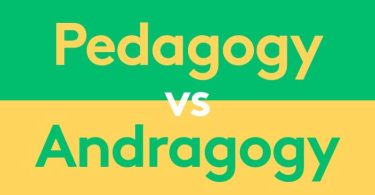Voter intimidation and voter suppression try to stop people from voting, but they do so in different ways and with different people in mind. Voter intimidation is when someone uses fear, threats, or coercion to try to change how someone votes or stop them from voting. This includes verbal or physical harassment, showing weapons, or spreading false information about what you need to do to vote. People or groups are often targeted by intimidation because of their race, ethnicity, or political beliefs.
Conversely, voter suppression is when people try to make it hard or impossible for eligible citizens to vote. Some ways to stop people from voting are through strict voter ID laws, fewer polling places, shorter voting hours, or the aggressive removal of names from voter rolls. Unlike intimidation, suppression is usually done through laws or official actions, making it harder to spot and fight. Both voter intimidation and voter suppression work against democratic principles, but voter intimidation works on individuals by making them afraid, while voter suppression works on larger groups by putting up institutional barriers.
What is Voter Intimidation?
Voter intimidation is a coercive and intimidating behaviour that undermines the democratic process by discouraging or influencing eligible voters. It may take the form of verbal or physical harassment, the dissemination of false information, or the exhibit of weapons near polling locations. In an effort to influence election outcomes, intimidation may target specific individuals or groups based on race, ethnicity, political affiliation, or other factors.
Voter intimidation is unlawful and punishable by law in a number of nations, including the United States. Voter intimidation may be perpetrated by individuals, political parties, or other organisations with vested interests in the outcome of an election. The employed strategies range from subtle psychological coercion to overt aggression or violence. By undermining confidence in the electoral process and discouraging citizens from exercising their right to vote, voter intimidation undermines the foundation of democracy and jeopardises the legitimacy of election results.
What is Voter Suppression?
Voter suppression refers to deliberate and systematic efforts to obstruct or restrict the participation of eligible citizens in the electoral process. In contrast to voter intimidation, which targets individuals through fear or coercion, voter suppression frequently utilises institutional barriers to affect larger groups of voters, particularly those from marginalised communities.
Restrictive voter ID laws, limited polling locations and hours, aggressive purging of voter registers, and gerrymandering are voter suppression tactics. These measures disproportionately impact minority populations, low-income communities, older people, and people with disabilities, frequently resulting in lengthier wait times, confusion, or the inability to vote at all.
Political parties, elected officials, or government agencies with vested interests in the electoral outcome can implement voter suppression through legislation, policy modifications, or administrative actions. By restricting access to voting, voter suppression undermines democratic principles and threatens the impartiality and legitimacy of elections.
Difference Between Voter Intimidation and Voter Suppression
Voter intimidation and voter suppression are fundamentally different in their aims and techniques. Sometimes directed towards specific groups based on race, ethnicity, or political affiliation, voter intimidation is the use of fear, threats, or compulsion to influence or dissuade someone from voting. Voter suppression, on the other hand, is when eligible persons are prevented from voting by using institutional barriers like rigorous voter ID requirements, limited polling sites, or active purging of voter rolls. Although both intimidation and suppression are harmful to democracies, the former primarily affects single people through fear, while the latter affects larger groups through institutionalised obstruction. Below, we shall compare and contrast voter intimidation with voter suppression and emphasise the key differences between the two.
Targeting
The targets of voter intimidation are often singled out based on race, ethnicity, or political beliefs. Larger populations are the target of voter suppression efforts, which usually take the form of institutional restrictions that disproportionately impact specific demographics.
Methods
Intimidation strategies, such as harassment or dissemination of false information, are used to instil fear, threaten, or coerce a target. Restrictive measures, such as reducing the number of voting places or enforcing tight voter ID requirements, are examples of suppression techniques.
Perpetrators
Politically motivated individuals or groups are more likely to engage in voter intimidation, while political parties, elected officials, or government agencies are more likely to engage in voter suppression through legislation or official acts.
Detection
In most cases, intimidation will present more obviously, making it simpler to spot. It is typically more difficult to identify and counteract suppression because of its covert and systemic nature.
Legality
Voter intimidation, which typically entails direct acts of hostility or harassment, may be easier to police than other laws, despite the fact that both are prohibited in many nations, including the United States. Conversely, suppression sometimes involves ostensibly valid regulations or procedures, making it harder to dispute in court.
Impact on Democracy
Voter intimidation undermines trust in the democratic process because it targets people with fear, whereas voter suppression undermines trust because it limits access to voting through institutional hurdles.






